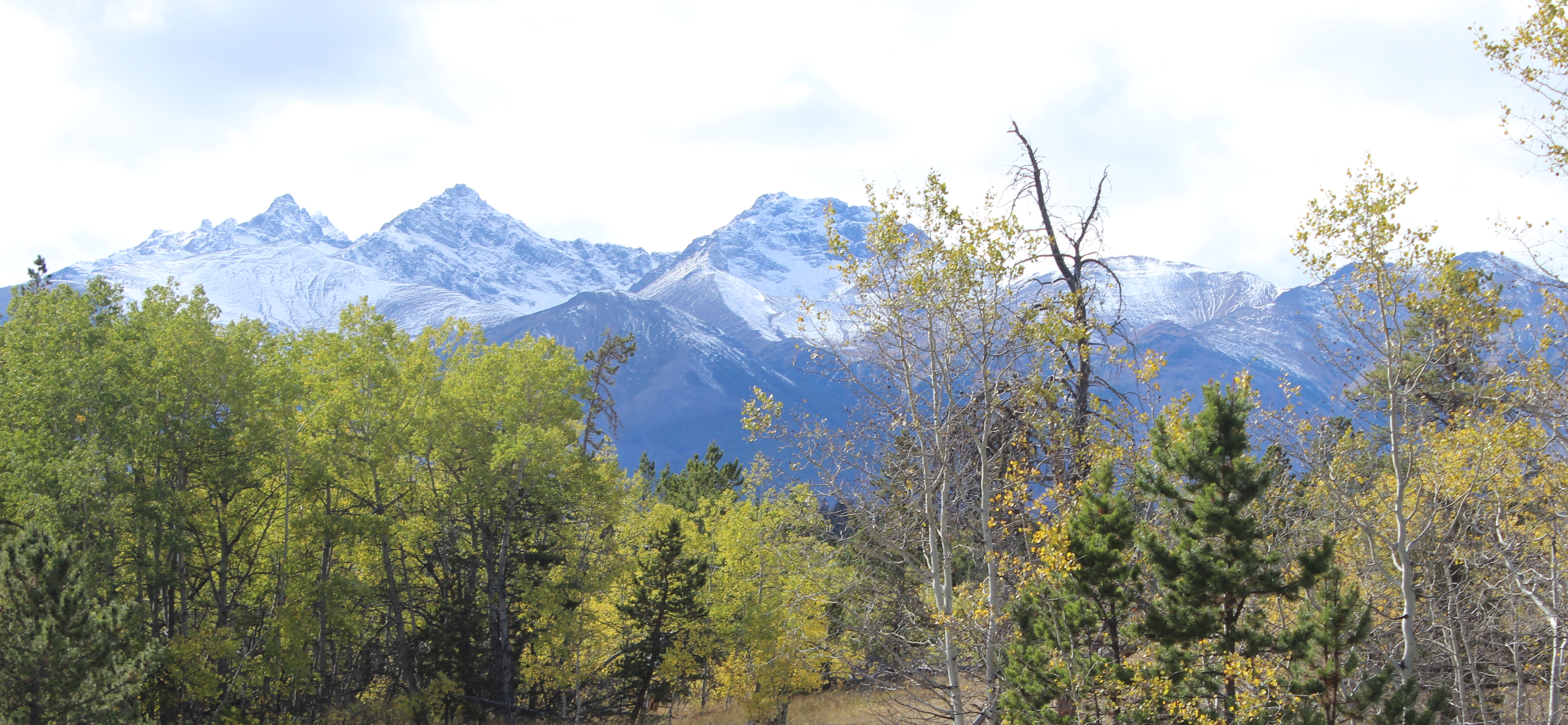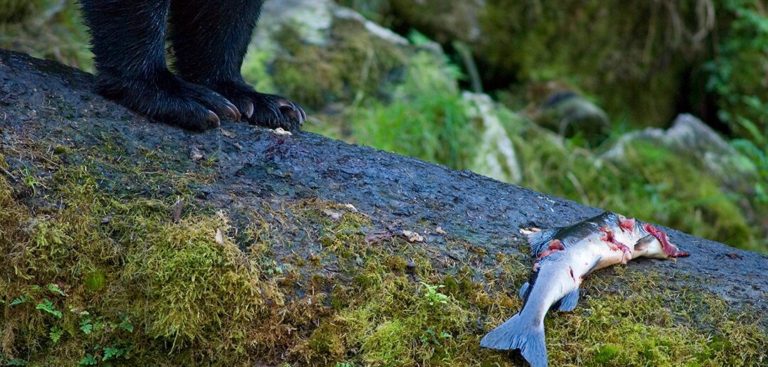
Salmon in the Trees: A New Lens on the Tongass
ALASKA / BRITISH COLUMBIA
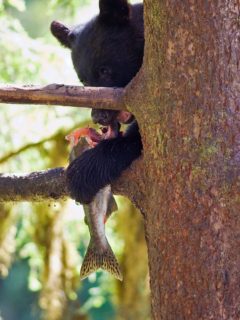
Amy Gulick was born a story teller. As a kid, she drew illustrations to accompany her adventure stories, but after receiving her first Kodak Instamatic camera there was no looking back. She went from taking photos for the high school newspaper, to writing about backpacking and kayaking for outdoor travel magazines, to writing and photographing large-format books about wild places.
“The more time I was out in these gorgeous locations, the more I would see the threats that they faced,” shares Gulick about her early days writing for magazines. “I found people genuinely cared about the places I covered once they learned what was going on there.” Recognizing that magazines had a short shelf-life, Gulick turned to large-format visual media as a way to increase the impact of her photography and writing.
Gulick stumbled upon the majesty of the Tongass, America’s largest national forest, after moving to coastal Washington. “I could see the Tongass had a story, and I wanted to help tell it.”
Putting Story to Paper
In 2007 Gulick began immersing herself in Southeast Alaska. She interviewed a diversity of people from fisherman, to guides, to artists and exhaustively researched the Tongass’ culture, history, and wildlife. With one-third of the world’s rare old growth coastal temperate rainforest, and some of the world’s highest densities of grizzly bears, black bears, bald eagles, and wild salmon, she knew there was a powerful narrative to accompany her images of the 17-million acre Tongass.
Gulick recalls coming across a dry scientific article that helped all the pieces click into place. “I remember saying to myself, ‘are you trying to tell me that there are salmon in the trees?’ I slept on it for a few days, and the idea just wouldn’t go away.” Gulick decided to use that ecological connection as the hook for her story. “I knew if I could help people understand how there were salmon in the trees then they would develop an understanding and appreciation of the place.”
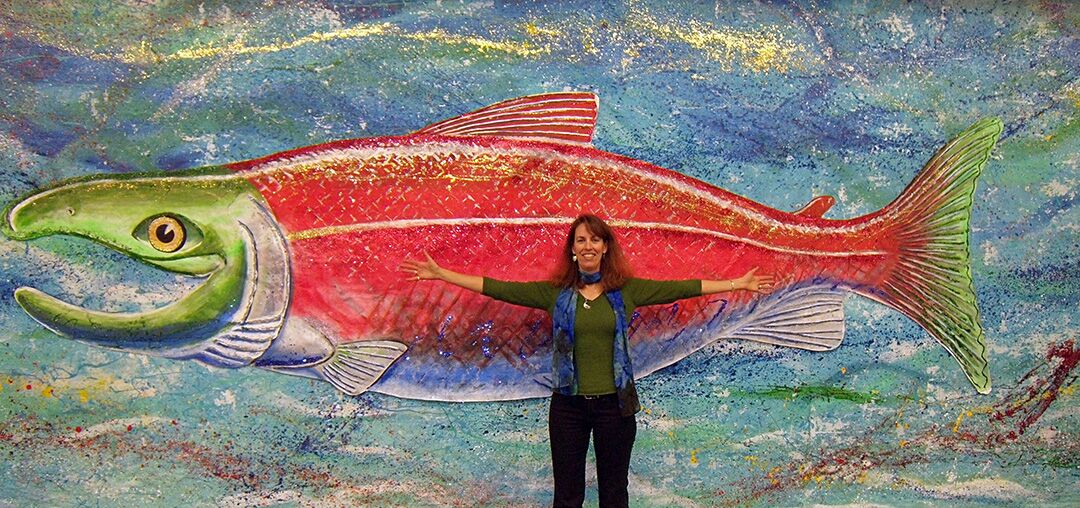
Amy Gulick shares her Salmon in the Trees story across the nation; pictured here at Harriett Hall in Haines, Alaska.
“I could see the Tongass had a story, and I wanted to help tell it.”
The Cycle of Salmon
Salmon are anadromous fish, meaning they are born in freshwater, spend the majority of their life in the ocean, and return to their natal streams to spawn and die. When they return to their birth streams, they also return to hungry black and brown bears. While some bears consume fish streamside, many head into the forest to eat their fish. Gulick describes the bears as UPS delivery personnel bringing their salmon packages into the woods. Discarded and half-eaten salmon carcasses are then consumed and transported even farther by eagles, small carnivores, and other scavengers.
“The eagles soar farther because of the salmon they eat. The female bears nurse their young with nutrient-enriched milk. And, 70% of the nitrogen found in streamside foliage is of ocean-origin—brought by salmon, delivered by bears, and absorbed through the roots of plants. That’s how salmon end up in the trees,” says Gulick as she lists some of the ways this incredible fish feeds an ecosystem as well as the people in the region. “The forest supports the salmon as well. The trees shade the streams, the rotten trees fall and create protected pools, and decay feeds the insects that the salmon feed on when they are young.”
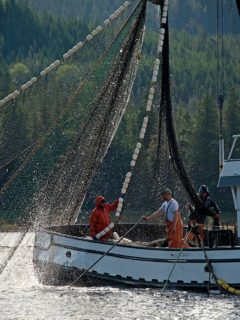
Sharing the Story
Gulick found the perfect publishing partner in Braided River, whose books “are a gateway to a landscape,” says Helen Cherullo, Executive Director of the Seattle-based non-profit publishing house. “They help connect people viscerally to what is important in life.”
Braided River released Salmon in the Trees in 2010. Soon after that, Gulick and her story hit the road with Braided River’s support. In recognition of the 2011 International Year of the Forests, a Salmon in the Trees photography exhibit traveled to six communities in Southeast Alaska. Subsequently, Braided River collaborated with the U.S. Forest Service to develop two permanent exhibits. One is at Mendenhall Glacier Visitor Center in Juneau and another at the James & Elsie Nolan Center in Wrangell. Together these exhibits help more than half a million visitors a year understand the values of the Tongass National Forest and the merits of protecting them.
Changing the Narrative
Gulick’s inspirational photographs and narrative have helped advance a larger discussion among conservationists, communities, and policymakers about the value of the Tongass and how it should be managed. In 2011, the Department of Agriculture, announced a commitment to transition away from old-growth clear cutting in the Tongass.
Wilburforce partners, including Sitka Conservation Society and Trout Unlimited, have helped advance a vision for the Tongass that would manage the forest as a resource for fisherman, recreation, subsistence, and a new economy. According to Trout Unlimited, the Tongass’ fish contribute nearly $1 billion to the local economy and an estimated 10 percent of the region’s jobs. Despite this, the Tongass and its wildlife face serious threats, including timber, mining development, initiatives to privatize sections of the forest, and climate change. Trout Unlimited, in collaboration with fishermen, scientists, land managers, GIS experts, and others has developed the Tongass 77 Proposal to protect in perpetuity the Tongass’ 77 most high-value salmon and trout watersheds. This proposal and Sitka Conservation Society’s efforts to work collaboratively with the Forest Service and local communities to encourage holistic forest management, all get a boost from Gulick’s stunning images and Salmon in the Trees story.

